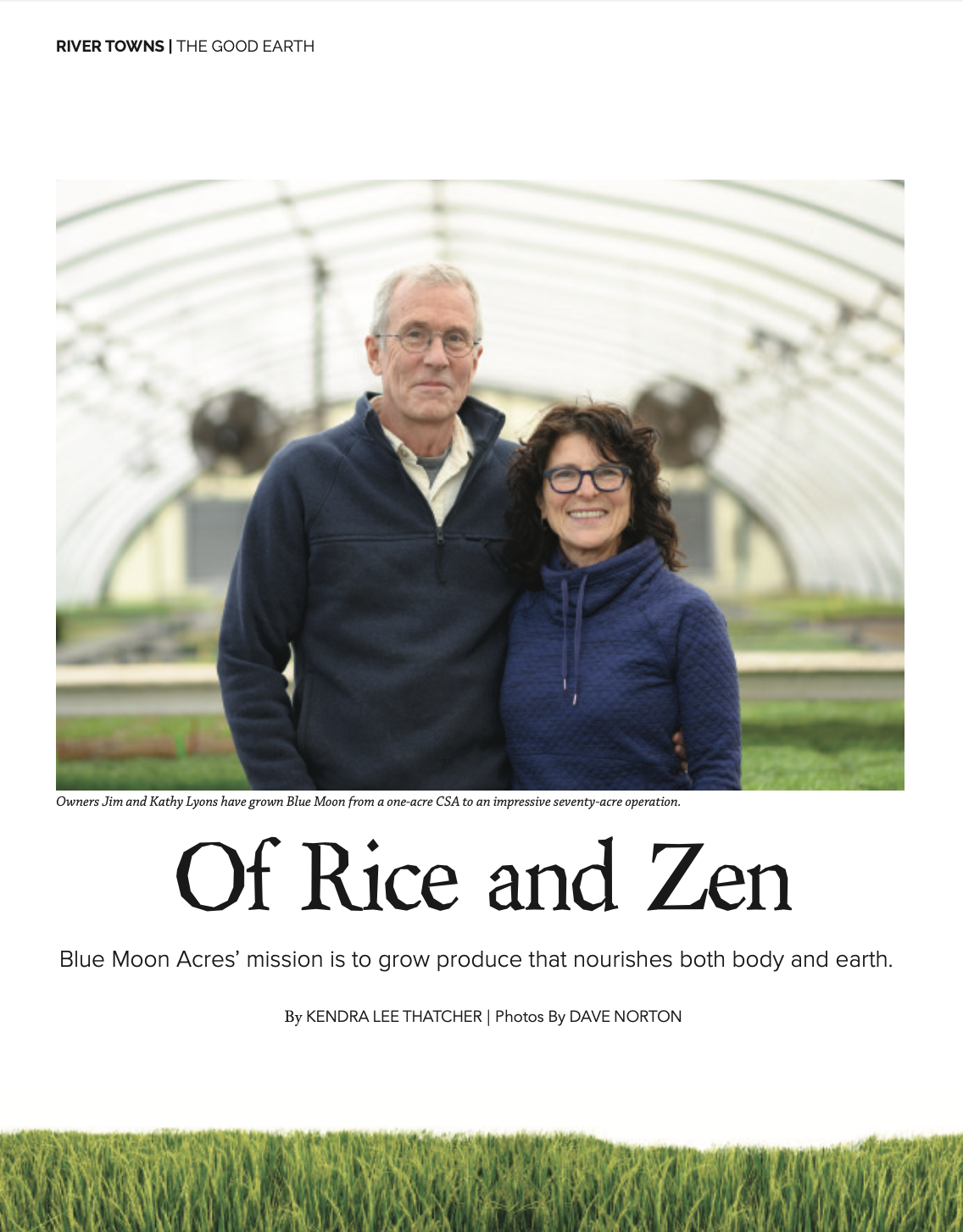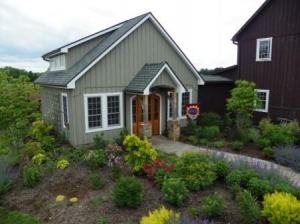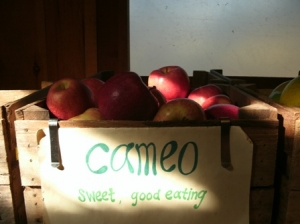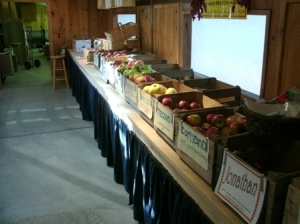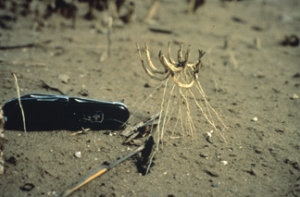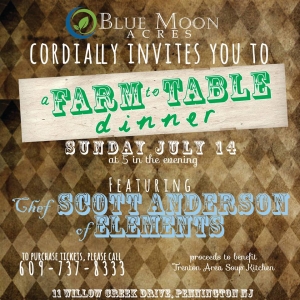Uncategorized
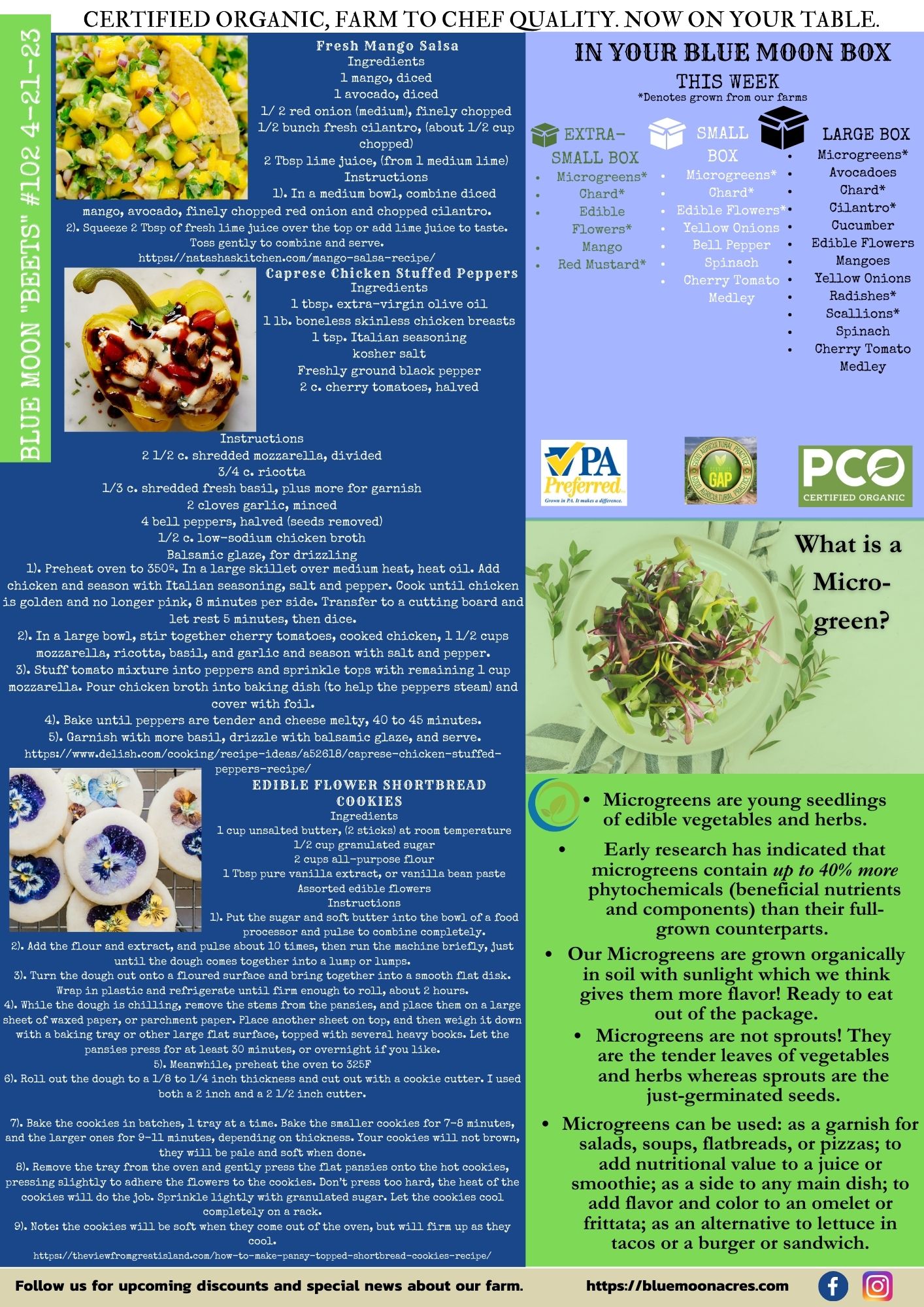
Blue Moon Acres’ mission is to grow produce that nourishes both body and earth.
3 Ways to Make Use of an Abundance of Tomatoes
Hello, tomato.
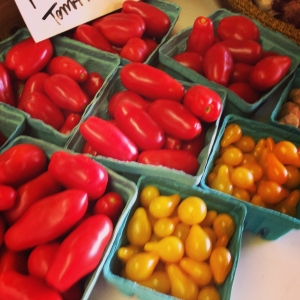
So wonderful to see you again.
Such taste, such loveliness, such flavor… tis’ the season of Jersey-grown tomatoes.
As a tomato lover, I sometimes find myself thinking with my eyes, and come home with more tomatoes than I can possibly consume. What’s a girl to do?
3 Ways to Make Use of an Abundance of Tomatoes
1. Give them away.
I know it may be difficult to give away such perfections of nature, but share the tomato love and give some away. Do you have friends who say they don’t like tomatoes (gasp!)? Gift them with a local tomato in season, at its peak ripeness, and watch them change their tune.
2. Roast them.
If you have less-than-pristine tomatoes, try roasting them in the oven to coax out their flavor. Eat them after roasting, or freeze them to enjoy year-round- roasting concentrates the flavor, so they’ll taste great. David Lebovitz has an excellent recipe here.
3. Can them.
Canning tomatoes sounds intimidating. I am new to canning myself- this summer will be the first time I’m putting up foods for the fall. Canning tomatoes is a big messy endeavor, so make sure you have the help and space you need before you dive in. It’s important to note as well that improperly canned tomatoes can cause botulism, a deadly poisoning. Follow the current USDA guidelines to keep you and your family safe. Mother Earth News has a helpful article on how to can tomatoes at home safely here.
What’s your favorite way to enjoy an abundant tomato harvest?
Winter on the Farm
If you’re like me, you’ve always wondered what goes on at a farm in the winter. You too have imagined farmers burrowing into the barren soil and remaining there, in a state of hibernation, until the warm weather returns. (Or at least sitting around watching Little House on the Prairie reruns.) For most farms, however, wintertime can be surprisingly productive.
At our Pennington, NJ location especially, the colder weather gives us an opportunity to play catch-up on repairs and maintenance. The high tunnels are stripped of their plastic sheathing and their framing realigned, and the tractors and harvesters are overhauled. At Buckingham, where micro-greens are grown year-round in heated greenhouses, hoses, compost, and peat moss must be brought indoors to safeguard against freezing.
Winter is also a time to prepare for the coming growing season. The performance of last year’s harvest is reviewed, with new crops proposed or abandoned based on performance, profitability, and most importantly, customer input. Crop rotation plans are drawn up to ensure soil vitality. Cover crops planted in the autumn also contribute to soil health by capturing and cycling much-needed nutrients, as well as preventing against erosion.
Another wintertime focus is the creation of compost. In late autumn, anywhere from 1000 to 2000 cubic yards of leaf waste are trucked in from neighboring lawns to be composted. This compost is then used as a soil amendment, or sometimes even mixed with the soil itself. A well-balanced compost can help reduce disease, retain water, and discourage the growth of weeds.
Here in the office, the off-season means forging new connections with restaurants, caterers, and retailers. It also means finding novel ways to broaden our relationship with existing supporters. Above all, it is a time to review the previous year’s successes and shortcomings, to fine-tune our processes, to strive to be the very best Blue Moon we can be!
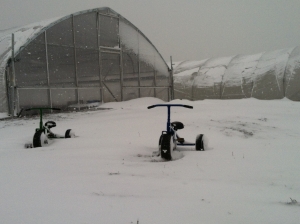 So while wintertime might see certain bears and hedgehogs retreating underground, it finds us farmers bright-eyed and bushy-tailed, our sleeves rolled up and our thinking caps on, dutifully preparing for the triumphant return of the sun.
So while wintertime might see certain bears and hedgehogs retreating underground, it finds us farmers bright-eyed and bushy-tailed, our sleeves rolled up and our thinking caps on, dutifully preparing for the triumphant return of the sun.
Geothermal Energy Comes to Pennington!
If you’ve been to our Pennington market, you’ve already experienced it—and probably didn’t even know it.
What am I talking about, you ask?
Geothermal energy.
Our market, harvest room, and upstairs living quarters are regulated using a horizontal geothermal heating/cooling system.
Geothermal energy, in its most basic form, is energy that is generated and stored within the Earth. To harness this energy, there are two basic methods. The first uses underground heat to generate electricity. The second, which we use at Blue Moon Acres, utilizes the Earth’s constant underground temperature to provide heating and cooling.
Here’s how it works:
Within the walls runs a circuit of pipes which are filled with an alcohol/water solution. After cycling through the market and harvest area, this circuit travels seven feet below ground, then several thousand feet across the farm, and then back again.
In the summer, hot air is whisked away from the house where it is dispersed through the much cooler underground layer. In the winter, the circuit draws warmth from that same underground layer, which remains at a constant 55 degrees. A series of fans then blows across the cooled/warmed pipes to distribute the temperature evenly.
Some more fun facts:
- If the mercury dips below zero for any length of time, an electric back-up kicks on, keeping the building nice and toasty.
- The temperature is controlled using an ordinary thermostat—same as with a traditional system!
- Excess heat created in the summer is used to satisfy over 90% of the farm’s hot water needs!
All told, the system provides heating/cooling for approximately 5,000 square feet. After the initial start-up investment, the system is inexpensive and reliable. Heating the same size space with electric would cost around $9,000 a year; doing it with oil would cost just under $13,000—and that’s with modern, efficient systems. And let’s not forget the gobs of emissions that are kept out of the atmosphere!
Geothermal may not be the solution to all the world’s problems, but it’s a start. If you’re building a new home or business, or are in the market for a new heating/cooling system, you should give it some thought.
How ‘Bout Them Apples!
“An apple a day keeps the doctor away”, the old saying goes.
But what if that apple is local, recently-picked, and grown with love? Could it do more than just keep the doctor away? Could it spark a revolution?
Amy Manoff of Manoff Market Gardens thinks so.
“A well-grown apple is the most basic thing,” she says. “It doesn’t need to be cooked, sauced—it doesn’t need to be anything. It’s easy nutrition. All you have to do is eat it. And if it’s been grown right, it’ll surprise you.”
Nestled amid the rolling farmland of Bucks County’s Solebury Township, Manoff Market Gardens is one of those sleepy rustic stores that call to mind a simpler era, an era before supermarkets, blinking coupon dispensers, and automated checkouts. Fruit stacked in wooden crates, mason jars on modest shelving, hand-written signs, and a yellow lab dozing by the register. The customers all know Amy, and know each other too. It’s the kind of market that makes you want to open your own.
“I have amazing customers who drive all the way out here,” Amy reflects. “I’m not on some major road, so people have to put me on their list; they have to make a point of coming here. It’s pretty special.”
Though MMG is known for their mouthwatering strawberries, raspberries, cherries, blackberries, and over 2 dozen varieties of peaches and nectarines, what really struck me—lover of all things autumnal that I am—was their apples.
As of this writing, they have 11 unique varieties for sale: Northern Spy, Jonathan, Staymen, Cortland, Macoun, SunCrisp, Jonagold, Mutsu, Cameo, Manoff Golden, Fuji, and Gala.
And there are five more soon to come online: Keepsake, Braeburn, Pink Lady, Granny Smith, and Gold Rush.
“And with the Fuji,” Amy says, “we actually have two kinds—early and late, and the late Fuji is a super sweet, very crunchy apple that’ll last all winter. I’ve had late Fujis the following March that were still crunchy and delicious.”
Having gotten by on supermarket-bought apples for most of my life, I was amazed how tasty Manoff’s were. There were all these subtle flavors, all these nuanced notes I’ve never experienced before. The apples were crisp, firm, and intoxicatingly aromatic. It was like biting into a fresh fig for the first time: you never want to go back.
“I would never eat a Granny Smith from a supermarket,” Amy says. “They’re picked before they’re ready, so they end up kind of flat. Ours have an amazing flavor, nice and tart, a go-to apple for chefs. We can let them hang to the right moment and then just bring them into the store.”
Quality isn’t the only reason Amy eschews the supermarket scene; supporting the local economy holds equal sway.
“People understand that when they buy locally, they support the farmer. But the other side of it is that the money’s staying here: the farmer shops locally, hires local people, and so on.”
In the end, though, it all comes back to the apple.
“My favorite eating apple,” Amy reveals, “is the SunCrisp. It looks like a sunset, tastes like a pear; it’s crispy and juicy. For baking, my favorite is the Jonagold. It makes a great pie, it’s neither too sweet nor too tart, it doesn’t disintegrate, and it’s really easy to work with.”
The apple revolution may not be televised, but you can experience it firsthand at Manoff Market Gardens. Join the uprising against bland, generic apples and help keep markets like Amy’s fortified for generations to come.
Seven Cool Ways to Get Your Compost On!
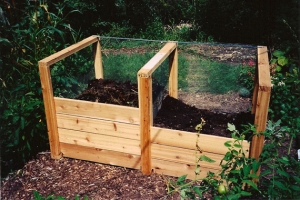 Imagine a pile of trash 2000 feet tall, one mile wide, and 85 million tons heavy. An enormous pile, almost large enough to be seen from space.
Imagine a pile of trash 2000 feet tall, one mile wide, and 85 million tons heavy. An enormous pile, almost large enough to be seen from space.
That’s how much compostable waste Americans discard in a single year.
According to the EPA, food scraps and yard waste account for 20 to 30 percent of what we throw away. These scraps sit unused in landfills, where they contribute approximately 34% of all man-made methane gas to the atmosphere. More methane in the atmosphere means more global warming.
Which is why home-composting is so important.
But with so many methods out there, which is the right one? And what if you don’t have a yard? What if you’re on a budget? How do you know where to start?
The following is a list of 7 of the most common and practical ways to compost:
1. Basic Pile.
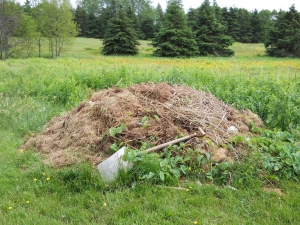 Doesn’t get any easier/cheaper than this. Just pick a spot in your yard and—you guessed it—start a pile. Grass clippings, leaves, kitchen scraps, coffee grounds etc are all fair game. (Just no meat; it stinks!). If you’re really motivated, you can throw a tarp over your pile when it rains: too much water slows down the aeration process. Even if you do nothing else, your scraps will eventually turn into beauteous compost
Doesn’t get any easier/cheaper than this. Just pick a spot in your yard and—you guessed it—start a pile. Grass clippings, leaves, kitchen scraps, coffee grounds etc are all fair game. (Just no meat; it stinks!). If you’re really motivated, you can throw a tarp over your pile when it rains: too much water slows down the aeration process. Even if you do nothing else, your scraps will eventually turn into beauteous compost
2. Enclosure:
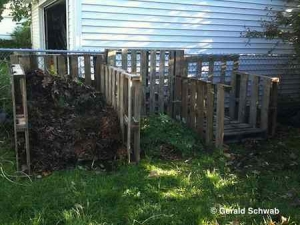 Kick it up a notch by building yourself a little enclosure. Chicken wire will get the job done, but you can also use wood from old pallets. An enclosure will help prevent your scraps from blowing into your neighbor’s yard, and will also ensure a higher internal temperature, thus a faster return on your investment. Turn every so often with a pitchfork, and the gift of compost will soon be yours.
Kick it up a notch by building yourself a little enclosure. Chicken wire will get the job done, but you can also use wood from old pallets. An enclosure will help prevent your scraps from blowing into your neighbor’s yard, and will also ensure a higher internal temperature, thus a faster return on your investment. Turn every so often with a pitchfork, and the gift of compost will soon be yours.
3. Basic bin:
 If space is an issue, why not use an old trash can, bucket, or barrel? More discreet than the enclosure or pile, and ideal for the compost-minded townie. If you’re looking for something with a little more class and/or functionality, ready-made compost bins come with lids and small doors for ease of removing finished soil. For quicker results, balance your ingredients—2 parts brown to 1 part green.
If space is an issue, why not use an old trash can, bucket, or barrel? More discreet than the enclosure or pile, and ideal for the compost-minded townie. If you’re looking for something with a little more class and/or functionality, ready-made compost bins come with lids and small doors for ease of removing finished soil. For quicker results, balance your ingredients—2 parts brown to 1 part green.
4. Spinning Composter:
 The name says it all. Same as the aforementioned bin, but pitched horizontally, and set on an axle. Simply add your scraps and give it a whirl! The process of spinning, or ‘tumbling’, adds oxygen and expedites the decomposition. Store-bought models are a little spendier, but there are a number of cheap DIY solutions available online.
The name says it all. Same as the aforementioned bin, but pitched horizontally, and set on an axle. Simply add your scraps and give it a whirl! The process of spinning, or ‘tumbling’, adds oxygen and expedites the decomposition. Store-bought models are a little spendier, but there are a number of cheap DIY solutions available online.
5. Vermicomposting:
 Composting with worms! Premade kits complete with worms are available online, or you can make your own. Drill drainage holes in rubber made bin, add dampened shredded newspaper, cardboard, and worms, and then slowly introduce food scraps, keeping them buried to deter fruit flies. The worm ‘casings’ –poop for us laypeople—can then be used as potting soil! If you’re worried about smell, don’t be: I promise, Vermicomposting does NOT smell. Perfect for folks in an apartment.
Composting with worms! Premade kits complete with worms are available online, or you can make your own. Drill drainage holes in rubber made bin, add dampened shredded newspaper, cardboard, and worms, and then slowly introduce food scraps, keeping them buried to deter fruit flies. The worm ‘casings’ –poop for us laypeople—can then be used as potting soil! If you’re worried about smell, don’t be: I promise, Vermicomposting does NOT smell. Perfect for folks in an apartment.
6. Automatic Hot Composter:
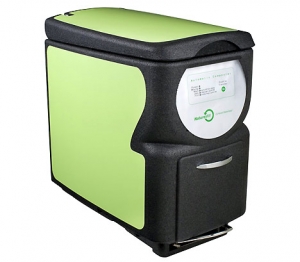 Probably the priciest of indoor composting options, this is nevertheless one of the coolest, quickest ways to get the job done. Capable of mixing and aerating up to five pounds of food a day—automatically! And, you can even add dairy, meat and fish! Every two weeks you’ll have yourself a fresh batch of gorgeous compost.
Probably the priciest of indoor composting options, this is nevertheless one of the coolest, quickest ways to get the job done. Capable of mixing and aerating up to five pounds of food a day—automatically! And, you can even add dairy, meat and fish! Every two weeks you’ll have yourself a fresh batch of gorgeous compost.
7. Microbe Composter:
 Similar to vermicomposting, but uses special microbes called Bokashi to digest organic scraps. The Bokashi composting container, a not unattractive bucket, can be kept in a closet or alongside your wastebasket. And best of all: it only takes a couple weeks before you have dense, lush, compost!
Similar to vermicomposting, but uses special microbes called Bokashi to digest organic scraps. The Bokashi composting container, a not unattractive bucket, can be kept in a closet or alongside your wastebasket. And best of all: it only takes a couple weeks before you have dense, lush, compost!
So you see, no matter what your living situation or budget, there’s a composting solution that’s right for you!
Soil. The Other Black Gold.
When we think about natural resource depletion, most of us think fossil fuels, fresh water, or helium. Few would imagine our planet ever running out of topsoil. Yet according to a recent Cornell University study, that’s precisely what’s happening—at a rate of 10 to 40 percent a year, one of our most precious resources is being depleted.
Topsoil, as defined by Science Dictionary, is the upper portion of soil, usually dark-colored and rich in organic material. On average, our planet is covered with less than three feet of this vital compound. Without it, agriculture would cease to exist, and fish and algae, which depend on the transfer of top-soil-specific nutrients via rainwater, could face extinction. And because topsoil acts as a sponge, flooding would be more pervasive and destructive.
More topsoil facts:
- 37,000 square miles of cropland is lost every year to soil erosion.
- Over the last 40 years, erosion has resulted in a 30 percent reduction in the world’s arable soil.
- Air-borne dust, which is increased by erosion, acts not only as an abrasive and air pollutant, but also as a vector for over 20 infectious diseases.
- To replenish but a single inch of topsoil takes approximately one hundred years.
Indeed, such sobering statistics have led Cornell Professor of Ecology David Pimentel to call soil erosion “second only to population as the biggest environmental problem the world faces.” Modern agriculture, residential construction, deforestation, overgrazing, and mining all share some of the blame. Clearly, a change is needed—but what?
In terms of agricultural practices at least, a consensus does seem to be emerging. Tilling, once the industry-standard for controlling weeds, is now being reexamined. When we till, we leave soil exposed to wind and rain, the two biggest causes of erosion. Planting cover crops also reduces erosion; so too can leaving straw from previous harvests. Geotextiles, permeable fabrics used for reinforcement and protection, are yet another option.
Organic farming methods can also help. Pesticides and herbicides sap the soil of vital nutrients, leading to poor water retention and shallow root growth. A healthy, vibrant soil, with a diverse and thriving biology, is much more resistant to the forces of erosion. Only by focusing on soil biology, says Blue Moon Acres’ owner Jim Lyons, do we see decreased disease, greater sustainability, and improved nutrient levels—the cornerstones of erosion prevention. “Erosion is really just a symptom of a problem,” Lyons says.
Professor John Crawford of the University of Sydney takes it a step further. He recommends “…getting carbon back in the soil…” by adding manure and even considering “…using human waste from cities as fertilizer, instead of just flushing it all out to sea.” He also suggests developing pricing mechanisms that take into account the environmental and health costs of destructive agricultural and distribution practices. “Farmers need to be appropriately rewarded for regenerating the environment and producing food that supports a healthier society.”
The endangerment of topsoil is a crisis of the highest order, one that could well imperil both our species and our planet. Though the path towards soil sustainability is a trying one, it is nevertheless within our reach. The question is, will we rise to the challenge?
Farm to Table Dinner with Elements Restaurant
[dropcap]J[/dropcap]OIN US! We will be hosting our very first Farm to Table Dinner Sunday July 14 at Blue Moon Acres Pennington with Chef Scott Anderson of Elements and Mistral restaurant in Princeton, NJ. Tickets and more information: http://

